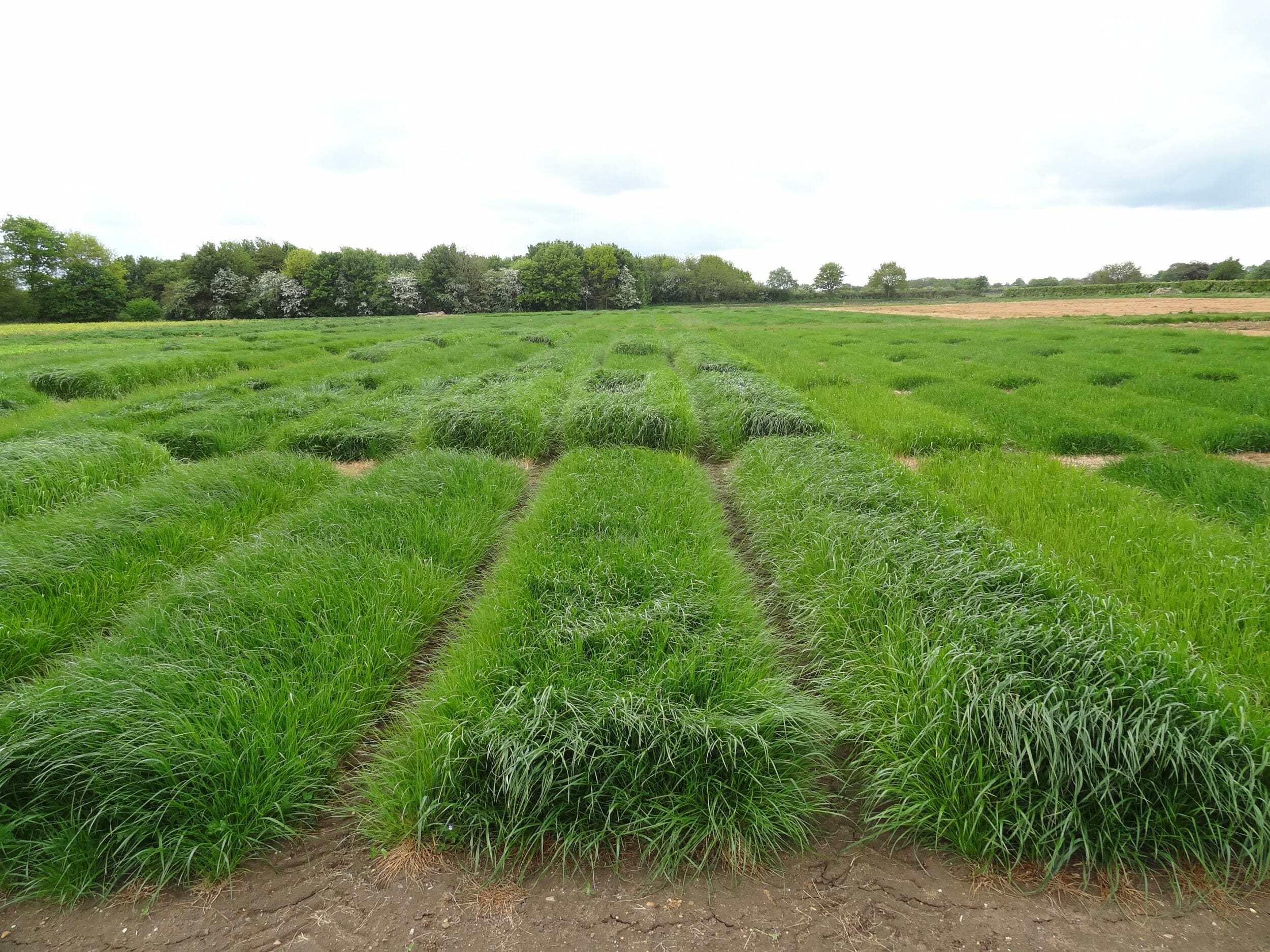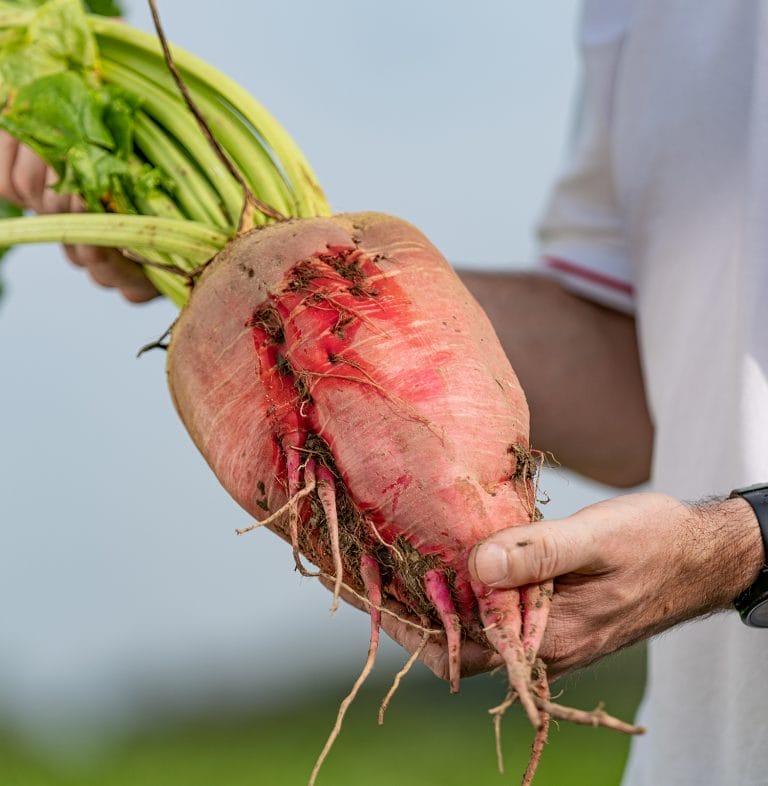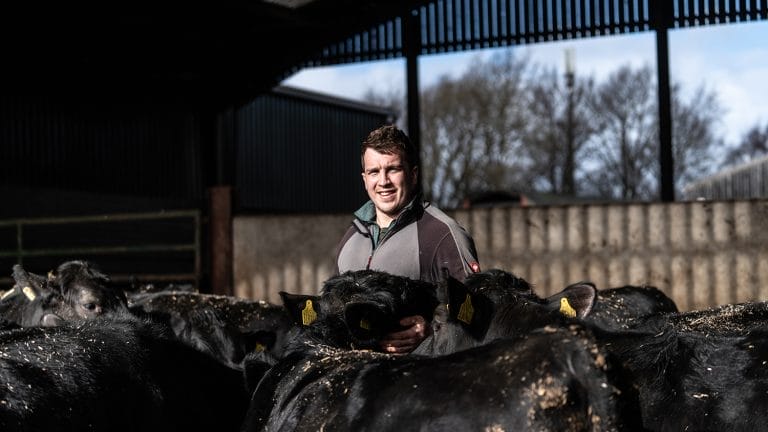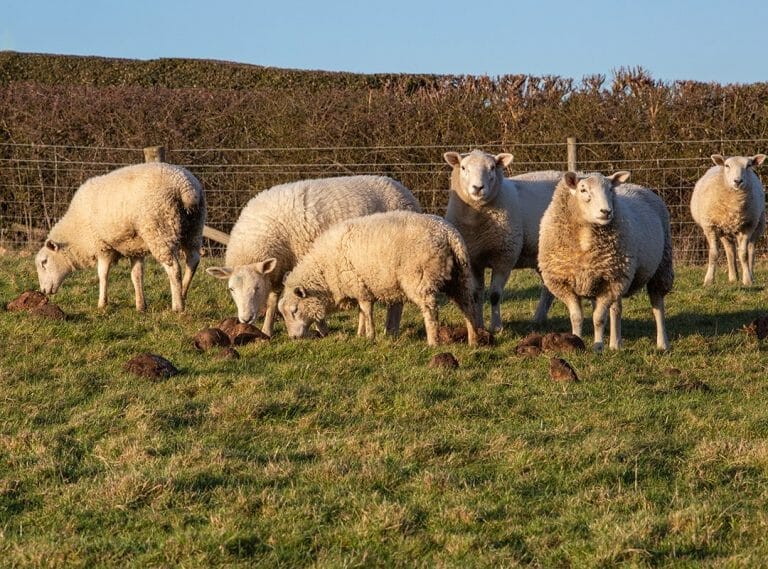
Limagrain UK’s latest grass trial results show the value of young swards, and high quality mixtures
Livestock farmers can add significant value to their grass crops through reseeding and by using better quality mixtures. This added value comes in yield, feed value and, importantly, financial output. But it must be cost-effective. Reseeding costs and opting for high quality proven mixtures have to provide a favourable return on investment. Limagrain UK’s latest grass trial results demonstrate that farmers can use these tools to add value to their business. Value of young grass New trial information published by Limagrain clearly shows the importance of regular reseeding and opting for high quality mixtures with proven yield and feed quality benefits. LG innovation site trials, from 2017 to the end of 2020, have tested more than 30 conservation and grazing grass seed mixtures against industry controls. These trials are unique among the industry for several reasons: • The trials ran across four consecutive years from 2017 to 2020 • Mixtures were tested, not individual varieties • Yield and feed quality in grazing swards were recorded at regular intervals throughout the four years and not just in spring • Forage quality parameters such as ME, digestible fibre, sugars and protein were recorded for all conservation cuts right through the growing season The complexity of the Limagrain trials allowed the company to better access the true performance of the mixtures on trial. Yield and feed value comparisons were made between a range of grass seed mixtures at one and four years old. Yield drop of 40% Average yields from the four-year-old mixtures under a grazing regime was nearly five tonnes per hectare lower – around 40% – than the average for the same mixtures in their first growing year, as shown in Table 1.  The growth rate of the newer mixtures was consistently higher throughout the season, with a peak growth rate of 124kg/day/ha in the spring compared with 74kg/day/ha from the older grasses, as shown in Figure 1.
The growth rate of the newer mixtures was consistently higher throughout the season, with a peak growth rate of 124kg/day/ha in the spring compared with 74kg/day/ha from the older grasses, as shown in Figure 1.  More milk, more meat The five tonne yield difference from year one to year four equates to a reduction in energy yield of 57,947 MJ, which equates to 10,933 litres of milk worth. Based on a standard milk price of 30p a litre, this is worth £3280 a hectare. Or if this shortfall of energy was met from bought in wheat, this would require 4.92t of feed wheat, costing £836 based on a cost of £170 a tonne. Reseeding makes sense Estimates put the costs from £430 per hectare to around £700 per hectare for a full reseed, so based on the milk and meat output from year one to year four, it is easy to see why this is a recommended practice from 20% to 25% of grassland each year. Integrating grassland with another forage crop or with an arable crop to help control pests and diseases, is an advantage too, alongside yield gains, and one where the momentum will increase. Spring inspection Spring and after first cut silage is a good junction for a grassland inspection. A sustainable sward needs more than 80% of sown species, typically ryegrasses and perhaps clover. If there’s less, but between 80% and 50%, then the sward needs some attention and, depending on its age, some overseeding or slot seeding to get it back on track, or a reseed. It there’s less than 50% of sown species, then a full reseed is likely to be the only solution. Swards should also be checked for pests and diseases too. If plants are weak and come out easily when tugged then their roots are weakened and there may be pest infestations like nematodes, wireworms or leatherjackets. Compaction can also hinder grass productivity too, with root development and nutrient exchange restricted where machinery has passed or on cow routes. Mixtures make a difference Limagrain trials compared the performance of more than 30 grass seed mixtures and found considerable differences between them, particularly in terms of feed quality. Looking at the yield and feed values under grazing and conservation management, the Monarch LGAN Silage & Grazing dual purpose mix performed particularly well. This high performance mixture for many dairy and beef units. LGAN Silage & Grazing produced yields of 8% more dry matter per hectare than the control mixture under conservation management and 12% higher under grazing management. Feed quality of this mixture was also considerable higher than the control with high sugars and exceptional levels of digestible fibre (dNDF). The average dNDF measured across the four year trial was 2.5% higher under grazing management and 4.0% higher under conservation management compared with the dual purpose control mixture, shown in Table 2.
More milk, more meat The five tonne yield difference from year one to year four equates to a reduction in energy yield of 57,947 MJ, which equates to 10,933 litres of milk worth. Based on a standard milk price of 30p a litre, this is worth £3280 a hectare. Or if this shortfall of energy was met from bought in wheat, this would require 4.92t of feed wheat, costing £836 based on a cost of £170 a tonne. Reseeding makes sense Estimates put the costs from £430 per hectare to around £700 per hectare for a full reseed, so based on the milk and meat output from year one to year four, it is easy to see why this is a recommended practice from 20% to 25% of grassland each year. Integrating grassland with another forage crop or with an arable crop to help control pests and diseases, is an advantage too, alongside yield gains, and one where the momentum will increase. Spring inspection Spring and after first cut silage is a good junction for a grassland inspection. A sustainable sward needs more than 80% of sown species, typically ryegrasses and perhaps clover. If there’s less, but between 80% and 50%, then the sward needs some attention and, depending on its age, some overseeding or slot seeding to get it back on track, or a reseed. It there’s less than 50% of sown species, then a full reseed is likely to be the only solution. Swards should also be checked for pests and diseases too. If plants are weak and come out easily when tugged then their roots are weakened and there may be pest infestations like nematodes, wireworms or leatherjackets. Compaction can also hinder grass productivity too, with root development and nutrient exchange restricted where machinery has passed or on cow routes. Mixtures make a difference Limagrain trials compared the performance of more than 30 grass seed mixtures and found considerable differences between them, particularly in terms of feed quality. Looking at the yield and feed values under grazing and conservation management, the Monarch LGAN Silage & Grazing dual purpose mix performed particularly well. This high performance mixture for many dairy and beef units. LGAN Silage & Grazing produced yields of 8% more dry matter per hectare than the control mixture under conservation management and 12% higher under grazing management. Feed quality of this mixture was also considerable higher than the control with high sugars and exceptional levels of digestible fibre (dNDF). The average dNDF measured across the four year trial was 2.5% higher under grazing management and 4.0% higher under conservation management compared with the dual purpose control mixture, shown in Table 2.  This digestible fibre value for the Monarch LGAN Silage & Grazing mixture used in conservation was the highest recorded on the trial among all mixtures. Research has clearly shown that an increase in dNDF levels in the diet has benefits for animal production. A 1% increase in dNDF has shown to increase milk yields by up to 0.25kg/cow/day. So a 4.0% increase in dNDF is equivalent to a litre of milk per cow per day. In a 300-day lactation this would amount to £90 per cow based on a standard milk price of 30p per litre. For a 200-cow herd, this would be £18000 of extra milk value. LGAN Silage & Grazing mixture – what’s on offer This medium term, dual purpose mixture includes diploid and tetrploid ryegrasses and white clover to provide high value grass for conservation or grazing mid and late season. The ryegrass varieties are high D-value and digestible fibre to promote intakes and feed value. The white clover improves palatability and provides a protein crop with high mineral levels. The seed is treated with HEADSTART* GOLD in promote faster establishment, stronger seedlings and higher plant populations. Monarch Silage and Grazing mixture is LGAN accredited that identifies it as having a proven ability to deliver superior nutritional value, while maintaining excellent agronomic qualities and yield. Limagrain mixtures with LAGAN accreditation are all supported with independent trial data that demonstrate their added feed value.
This digestible fibre value for the Monarch LGAN Silage & Grazing mixture used in conservation was the highest recorded on the trial among all mixtures. Research has clearly shown that an increase in dNDF levels in the diet has benefits for animal production. A 1% increase in dNDF has shown to increase milk yields by up to 0.25kg/cow/day. So a 4.0% increase in dNDF is equivalent to a litre of milk per cow per day. In a 300-day lactation this would amount to £90 per cow based on a standard milk price of 30p per litre. For a 200-cow herd, this would be £18000 of extra milk value. LGAN Silage & Grazing mixture – what’s on offer This medium term, dual purpose mixture includes diploid and tetrploid ryegrasses and white clover to provide high value grass for conservation or grazing mid and late season. The ryegrass varieties are high D-value and digestible fibre to promote intakes and feed value. The white clover improves palatability and provides a protein crop with high mineral levels. The seed is treated with HEADSTART* GOLD in promote faster establishment, stronger seedlings and higher plant populations. Monarch Silage and Grazing mixture is LGAN accredited that identifies it as having a proven ability to deliver superior nutritional value, while maintaining excellent agronomic qualities and yield. Limagrain mixtures with LAGAN accreditation are all supported with independent trial data that demonstrate their added feed value.


































